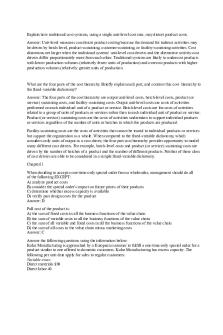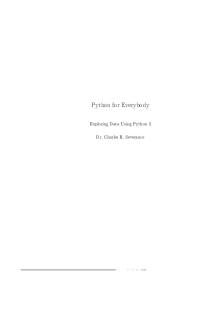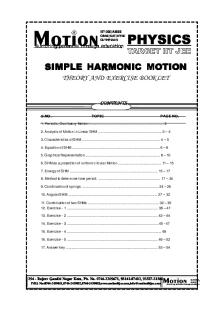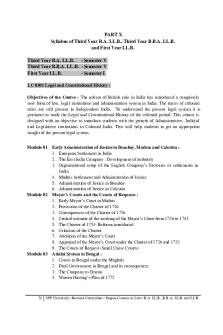Nice Good Help Easy PDF

| Title | Nice Good Help Easy |
|---|---|
| Course | Quality Management |
| Institution | Florida State College at Jacksonville |
| Pages | 13 |
| File Size | 238.5 KB |
| File Type | |
| Total Downloads | 34 |
| Total Views | 158 |
Summary
Calender to keep you on track as you move through your course work...
Description
Carolyn McAlister-Reading ATI TEAS Getting started Read the question first Do not leave questions blank Primary source = original source (photography, diaries, letters, eye witness reports) autobiography (auto= self) Secondary source= newspaper, obituary, biographies Passage Types Expository: scan the passage for numbers, it is factual, informing, ex: a textbook Where would you find this question? Always encyclopedia “The historical passages are expository “history of ____” Persuasive: words that indicate an opinion (email, novel) (words: should, good, best, seemed, most) purpose is to persuade Narrative: tells a personal story look for pronouns (we, I, they, we, my dialog/conversation, quotation marks) purpose: entertain Reference Materials Dictionary: look up meaning of words Thesaurus: book of word that have similar meanings(synonyms) Appendix: appears in the back of a book Ex: Global warming - (appendix 1 list something) appendix 2 list something Almanac: book/calendar useful for determining when the next tide is, phases of the moon, solar eclipse Index: very back of the book includes page numbers Key ideas and details
Main idea: same as the thesis statement (always the last sentence of the first paragraph) Summary: first sentence of the last paragraph Ex: which of the following best summarizes the passage Topic Sentence: The first sentence of every paragraph Ex: Which of the following represent the topic of the passage Supporting details: appear in the same paragraph as the topic sentence Ex: Which of the following supports _____? Recipes (expository) Asks what is the first thing that needs to be done Look at the ingredients, if there is an ingredient that needs to be prepared in advanced beans, rinsed; onion, chopped; eggs; beaten then chose the first ingredient on the list that needs to be prepped. Asks what should be done before a specific step First find the step that is part of the question. Then find the step immediately before it. Also be sure that you are familiar with different words that describe an action What does the word sauté mean? Maps Determine which direction a driver is headed Ex: a driver is headed toward the west. He drives 10 miles and then turns left. He continues to drive and at the third traffic light, he turns left again. He turns right at the stop sign and arrives at his destination. What direction is heading? South There will not be a map, take a scratch piece of paper and sketch a compass with N, S, E, W
2
Always start in the opposite direction of where the driver is going (if the driver is heading west, then start on the east) place your pencil on the east side and start drawing a line towards west Facts and opinions Fact: Information that can be verified is known as a fact. The information can be proven. Do not reveal the author’s feelings. Do not contain any opinions. EX: Abraham Lincoln was assassinated in Ford’s Theater. Fact: it is 70 degrees outside if a passage contains numbers it is usually a fact Opinion: it is too hot outside Opinion: Statements that contain a writer’s feelings or beliefs. They are not true or false. They contain one person’s viewpoint EX: people who read newspapers are stupid Words that indicate: Best, should, seems, most, good, better, worst Commas & Semi-colons ENGLISH & LANGUAGE 3 major times to use a comma: Use a comma when you have a series of 3 or more items EX: the students are focusing on reading, science, and bath Use a comma to separate day and year in a date. EX: she is taking the TEAS on November 6, 2018 Use a comma when combining two complete sentences (knows as independent clauses) before FANBOYS EX: we went to the football game, and our team won FANBOYS: for, and, nor, but, or, yet, so (independent clause) 3 major times to use a semi colon: Use a semi colon to separate two complete sentences (in place of a fanboys) EX: we traveled to Rome; it was beautiful The two sentences need to be associated with each other
3
Use a semi colon to separate items in a series that have already have commas (complex series) EX: the people attending the meeting included Al Jones, president; Lisa Smith, Vice president; and Diane Jones, treasure. Use a semi colon to join clauses using transitional words ex: however, otherwise, therefore, subsequently, in addition. EX: it is going to snow 3 feet tonight; therefore, all classes tomorrow are cancelled. Always have a comma when using transitional words Logical Conclusions Logical Conclusion: look for the clues and scan the passage If a question of the teas says both of the above, eliminate the answer Bias & stereotype Always look for opinion words: should, best, good, seems Bias: someone’s personal opinion To determine whether a passage contains a bias, you have to quickly search the passage for words that indicate an opinion Stereotype: an opinion of some people towards certain groups of people/ grouping races or genders (even though you don’t know them) To determine whether a passage contains a stereotype, you have to quickly search the passage for words that indicate an opinion Also look to see if the passage refers to/ labels a group of people EX: Most Asians are very good at Math. EX: Women are not as good in Science as men. Pronoun Antecedents ENGLISH & LANGUAGE What is a pronoun? Takes the place of a noun EX: Noun: marry is going to bed Pronoun: She is going to bed What is an antecedent? The noun the pronoun refers to The noun that is used at the beginning of the sentence
4
EX: the doctor went to the doctor’s car and drove home Antecedent: The doctor when to his car and drove home The pronoun has to agree with the antecedent Singular: The nurse used her stethoscope in the physical assessment Plural: The doctors wore their labs coats before examining the patients If there is a phrase of clause between the subject and the verb, the pronoun still must agree with the antecedent Singular: the car on the road is screeching its tires Plural: the cars on the road are screeching their tires Indefinite Pronouns (does not refer to something/someone specific) EX: Someone- somebody, something; anyone- anybody, anything EX: Someone dropped his or her napkin on the floor (someone is a singular pronoun antecedent, so it uses a singular pronoun his or her) If you have a compound subject that is joined by “and” must have plural pronouns EX: Bill and Ted spent all their money on their excellent adventure (bill and ted is a compound subject, so it must have a plural pronoun their) Compound subjects joined by “nor/or” uses a pronoun that agrees with the antecedent that is the closest to the pronoun. EX: neither the doctor nor the nurses took their break (nurses is plural, and it is the antecedent closest to the pronoun so it must have a plural pronoun their) EX: neither the doctor nor the nurse wanted to take his or her break (nurse is singular, and it is the antecedent closest to the pronoun, so it must have a singular pronoun his or her) Story elements Exposition: The beginning of the story, characters are introduced, setting is described, identifies the problem
5
Rising action: Where the action is, suspense builds, leads to the climax Climax: considered a critical moment, the part of the story when it really gets good, this when you can’t put the book down Falling Action: Everything that happens right after the climax, solution to the problems appear, characters work together to solve the problem Resolution: The end of the story, conflict is resolved Subject /Verb Agreement ENGLISH & LANGUAGE If the subject is singular the verb ends in “s” The dog barks at the cat. Dog= singular subject. Verb= must have an “s” Think “s” Subject Singular
S=Verb
If the subject is plural the verb does not end in “s” 1. The dogs bark at the cat. Dogs= plural subject. Verb= does not have an “s” Personal Pronouns (we, they, he, she) the same rules apply 1. He sees the car. He= singular subject. Verb= must have an “s” 2. We laugh at the joke. We= plural subject. Verb= does not have an “s” Exception: (I and you) If the subject is singular the verb does not end in “s” 1. I speak with a loud voice. I= personal pronoun singular subject. Verb= does not have an “S” 2. You speak with a loud voice. You= personal pronoun singular subject. Verb= does not have an “s” Past tense: both singular and plural subjects use the same form of the verb 1. The dog barked at the cat. Dog= singular subject. Verb= past tense=”ed” 2. Jack and Sally laughed at the joke. Jack and sally= plural. Verb= past tensed=” Ed” Helping verbs: If the subject is singular, the helping verb ends in “s”
6
1. The dog has barked at the cat. Dog= singular subject. Helping Verbs= must have an “S” 2. Jack has laughed at the joke. Jack= singular subject. Helping verb= must have an S Think S Subject. Singular
S= helping verb
If the subject is plural, the helping verb does not end in “s” 1. EX: the dogs have barked at the car. Dogs= plural subject. Helping verbs= does not have an “s” 2. Jack and Sally have laughed at the joke. Jack and Sally= plural subject. Helping verb= does not have an “s” Indefinite pronouns might sound plural, but they are singular. They use verbs that end in “s” Either, neither, other, anybody, anyone, anything, somebody, someone, something, everybody, everyone, everything, nobody, no one, nothing, each, one 1. Someone has the winning lottery ticket. Someone= singular subject. Verb= ends in “s” 2. neither smiles very often. Neither= singular subject. Verb= ends in “s” However, some indefinite pronouns are plural and use verbs that do not end in “s”: both, many, few, several, others 1. Both have a winning lottery ticket. Both= plural subject. Verb= does not end in “s” 2. Many smiles very often. Many= plural subject. Verb= does not end in “s” Tone and mood Tone: authors attitude toward the subject (usually biased) the author uses words to express a positive, negative, or neutral meaning Positive words: delightful, kindly, friendly Negative: tragic, solemn, dreadful Neutral: direct, questioning, unassuming
7
Uses different words to influence the reader’s reaction to the passage. It is easier to determine the tone when someone speaks (anger, humorous, sarcastic) EX of types of tine optimism, bitterness, tolerance, humorous, anger, respectfulness, kindness, and revengefulness 1. EX: Although we did not have any money gifts, we still had each other(optimism) 2. EX: The nurse worked long hours and took very good care of the patient (respectfulness) Formal Tone: any passage that is factual- expository. Examples include passages from textbooks, encyclopedias, biographies Nostalgic Tone: passages that appear to reminisce about the “good old days.” Narrative passages are usually nostalgic. Will usually contain personal pronouns: “I remember when I received my first bicycle.” Tragic Tone: passage that might appear in a newspaper, reporting a disturbing event: “someone used force to enter the food pantry and stole all the food that was to be distributed to the needy.” Reflective Tone: Often Narrative passage. Uses personal pronouns and describes how an individual might feel about an experience: “I realize now that I can learn as much from students as they might learn from me” Mood: readers reaction how we feel when reading the passage For example, have you ever read a book that frightened you or that made you cry? Chances are that the author’s use of words, the author’s tone, were designed to create those feelings Quotation Marks ENGLISH & LANGUAGE When do we use quotation marks? Direct quotes, titles, dialogue 1. Direct quotes: Martin Luther King Jr. one said “darkness cannot drive out darkness; only light can do that. Hate cannot drive out hate; only love can do that.” 2. Titles: “To kill a Mockingbird” “The Diary of Anne Frank” “Romeo and Juliet”
8
3. Dialogue: The weather man said, “it is going to be a very cold and snowy winter.” Commas & periods Punctuation and quotation marks: commas and periods always go inside quotation marks 1. EX: “Please be sure to clear your desk before the exam,” said the professor. 2. The proctor informed us that “no one is permitted to use a personal calculator during the teas exam.” 3. “Please,” the little girl cried, “I don’t want to take a nap.” Question marks & exclamation points Question marks and exclamation point can go either on the inside or outside of the quotation marks, depending on the sentence. 1. The student asked, “does anyone have any paper I can borrow?” 2. Did the student ask, “does anyone have any paper I can borrow”? Semi-colon Semi-colons always go outside the quotation marks: 1. Everyone should be finished reading “Sherlock Holmes”; there will be a quiz on the material tomorrow. 2. The label read “first call 911”; you would be wise to follow those instructions 3. Bob Woodward has written a new book, “Fear”; it is a best-seller. Nouns ENGLISH & LANGUAGE What are nouns? A person, place, or thing (girl, computer, New York City) What are the types of nouns? Common (cat, house, sport, plate, book) Are not capitalized unless they are the first word in a sentence or are part of a title 1. “Eagles have very strong tallons.” To Kill a Mockingbird”
9
Proper: includes people’s names and titles, cities, states, countries, and the name of the companies and other businesses (Nancy, Editor-in-chief, Los Angeles, Maryland, Canada, Amazon, Harvard University) Proper Nouns are always capitalized 1. The student grew up in a village in Ghana 2. Benjamin applied to two different universities: Columbia University and Louisiana State University 3. Internships are available at Microsoft, Apple, and Google What are the different purposes of nouns? 1. 2. 1. 2. 1. 2.
Subject of a sentence (the person or thing doing the action) The cat ate (cat is doing the action {ate}) The child cried (child is doing the action {cried}) Subject complement (used with linking verb) The teacher is a scholar (scholar tells who the teacher is) The women are veterans. ( women tell who the veterans are) Object (direct object, indirect object, object of preposition) The boy ate the ice cream (ice cream tells what the boy ate) The students read books (books tell what the student read)
Verbs ENGLISH & LANGUAGE What are verbs? Words that show action or a state of being. All sentences must contain a verb and a noun. Action: run, walk, will be attending 1. She runs 5 miles every morning 2. I walk to work everyday State of being: is, was, have been, seems 1. He is running late for the movie 2. Our teacher was planning to give us an exam today What are the principal parts of verbs? Past, present, and future tense (occurs in the past, now, or in the future)
10
Past: I ran to the elevator
Present: I run every morning
Future: I will run 6 times this week. Past participle (perfect tense) present perfect, past perfect, and future perfect “Why are these verb forms called “perfect”? When something is perfect it mean that it has been finished or completed. The perfect tense refers to an action that has already been completed 1. Present perfect: The baseball pitcher has learned how to throw a curve ball 2. Past perfect: He had attended baseball camp all summer 3. Future perfect: The pitcher will have played 100 games by the end of the summer Capitalization ENGLISH & LANGUAGE When to use capital letters: Beginning of sentences - Since it is still snowing, I do not think we will have school tomorrow Beginning of titles/ first letter of important words - “Gone with the Wind” “To Kill a Mockingbird” “Joey Pigza Swallowed the Key” Names: Lady Gaga, Michelle Obama, Nelson Mandela, Caroyln McAllister Titles of people’s names (before and/or after) - Dr. B.E. Well, Uncle Joe, General Robert Henry, Commander, Medical Command Proper nouns (cities, states, countries, continents) – New York City, New York, United States of America, Europe, Gambia Days of the week, months, and holidays – Tuesday, January, Thanksgiving First letter of a complete quote- The author states, “There is not enough evidence to prove violent video games cause violent behavior.” According to the doctor, “Infants and children should be read to every day.” Adjective and Adverbs
11
Adjectives: describing words: they provide more detail about the nouns in the sentence: what, which, and how Adjectives describe nouns and pronouns 1. EX: the grouchy man sat alone at the table “grouchy” describes the man You can have a complete sentence without using adjectives; however, including adjectives gives us more information about the nouns in the sentence 2. EX: the women is a model The tall woman is a model The tall woman is a fashion model Adjectives can appear either before or after a noun 3. EX: the rare diamond is worth millions of dollars (before) The diamond is large and valuable (after) Words: adorable, clean, kind, happy, angry, fresh, important, easy, careful Adverbs: describe verbs, adjectives, and other adverbs Describing words: they provide more detail about the other words in the sentence: how, when, and where. Just like adjectives, you can have a complete sentence without using adverbs; however including them gives us more information about the verbs, adjectives, and other adverbs in the sentences. 4. EX: The student studied her notes the student carefully studies her notes The student carefully studies her notes daily Most adverbs end in -ly Words: quickly, easily, very, inside, here, gently, sooner, often, always Types of Sentences A sentence needs a subject and a verb.
12
5. We cheered! She cried. I smiled. Incomplete sentences are called “sentence fragments.” Sentence fragments can contain additional words, such as articles, adverbs.. Sentence fragment: Some of the professors at my school (no verb) Complete sentence: Some of the professors at my school work 12 hours a day Simple: The cat drank the milk.
Her patient smiled at her.
Compound: two simple sentences joined together to make one sentence either ; or (FANBOYS) 1. The cat drank the milk, and she ate her food 2. Her patient smiled at her; he was feeling better Complex: Joined together by subordinating conjunction (which, while, when, where, because) 1. While I do admire your dress, it does not look good on you 2. I like your dress because it has bright colors Compound/complex: has two or more independent clauses and a dependent clause 1. When he finishes college, he will focus on obtaining a Master’s degree, but he has to finish his bachelor’s degree first 2. The iron Man Competition is very difficult, but many people complete the race in record time, which is amazing
13...
Similar Free PDFs

Nice Good Help Easy
- 13 Pages

Ch11 - nice
- 16 Pages

Pythonlearn - Nice
- 249 Pages

A3P1 - Nice
- 13 Pages

Unit1 - NICE
- 58 Pages

Naasa - Nice
- 4 Pages

Etech 2 - NICE
- 85 Pages

Dokument bez tytułu - nice
- 9 Pages

Manuale- NICE - BIO-FLO
- 1 Pages

Amcat automata 5 - Nice
- 2 Pages

Theory-jeemain - nice lectures
- 35 Pages

Llb syllabus 1 - Nice
- 4 Pages

Semana 6 - Nice
- 2 Pages

Catiadoc Help - Catia help
- 2 Pages
Popular Institutions
- Tinajero National High School - Annex
- Politeknik Caltex Riau
- Yokohama City University
- SGT University
- University of Al-Qadisiyah
- Divine Word College of Vigan
- Techniek College Rotterdam
- Universidade de Santiago
- Universiti Teknologi MARA Cawangan Johor Kampus Pasir Gudang
- Poltekkes Kemenkes Yogyakarta
- Baguio City National High School
- Colegio san marcos
- preparatoria uno
- Centro de Bachillerato Tecnológico Industrial y de Servicios No. 107
- Dalian Maritime University
- Quang Trung Secondary School
- Colegio Tecnológico en Informática
- Corporación Regional de Educación Superior
- Grupo CEDVA
- Dar Al Uloom University
- Centro de Estudios Preuniversitarios de la Universidad Nacional de Ingeniería
- 上智大学
- Aakash International School, Nuna Majara
- San Felipe Neri Catholic School
- Kang Chiao International School - New Taipei City
- Misamis Occidental National High School
- Institución Educativa Escuela Normal Juan Ladrilleros
- Kolehiyo ng Pantukan
- Batanes State College
- Instituto Continental
- Sekolah Menengah Kejuruan Kesehatan Kaltara (Tarakan)
- Colegio de La Inmaculada Concepcion - Cebu

